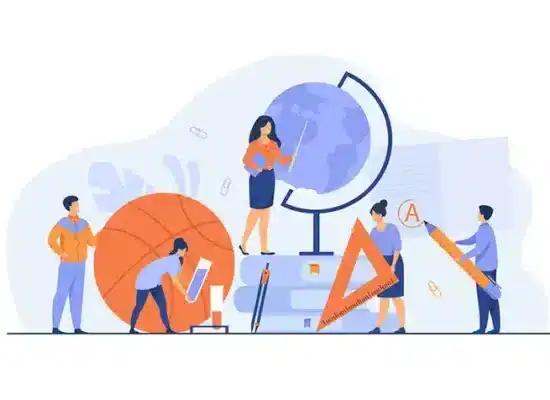What is Scaffolding in Education? How to Use Scaffolding to Improve Learning?
Updated: June 19, 2024

Teachers around the world are always on the hunt for ways to better connect with and teach their students. Back in 1976, researchers David Wood, Gail Ross, and Jerome Bruner rose to the challenge and coined the term “scaffolding” in a report entitled, “The Role of Tutoring in Problem Solving.” So what is scaffolding in education? In this blog, we’ll explore this innovative concept, why it’s so effective, and how you can implement it into your lesson plans today.

What are the Principles of Scaffolding?
Scaffolding, as a learning theory, highlights the importance of providing temporary support and guidance to learners as they work on tasks that are just beyond their current level of understanding or ability. Slowly, instructors pull back their level of support until the student is able to understand and use the new material on their own. It’s similar to how scaffolding is used in construction to support workers as they build a structure, only to be removed once the structure can stand on its own. Educational scaffolding involves providing students with the necessary tools, guidance, and assistance to help them master new concepts and skills.
What are the Three Types of Scaffolds?
Different learners respond best to different types of lesson plans and activities. What’s great about scaffolding teaching is that it can easily be adapted to different teaching styles, so it works for all kinds of learners. In this section, we’ll explore the three types of scaffolding methods and how to implement them in your classroom.
Sensory Scaffolding
Sensory scaffolding appeals to the part to the part of the brain that learns by doing. When designing lessons around sensory scaffolding strategies, they should aim to use a lot of models, physical activities, and even photos and illustrations. These allow learners contextualize abstract ideas through real and concrete experiences.
Interactive Scaffolding
Social interaction can play a huge role as students learn new concepts. That’s the idea behind interactive scaffolding. This method groups students together to collaborate, discuss, and learn from each other. Not only does this strengthen their listening and speaking skills, but it allows a space for synthesizing information and developing new ideas.
Graphic Scaffolding
Seeing information laid out visually can help learners of all types. With graphic scaffolding, instructors present information in the form of graphs, diagrams, and infographics. Using these tools in the initial stages of scaffolding gives students the opportunity to consider trends in the data as well as cause-and-effect patterns.
What are the Advantages of Scaffolding?
So now we know what scaffolding is, but why does it work? There are a few reasons.
First, scaffolding works because it, when done correctly, centers the student just outside of their intellectual comfort zone. It’s a balancing act. They need to feel confident in the foundational knowledge while at the same time, exploring concepts just beyond their knowledge. Scaffolding provides learners with a welcoming and caring learning environment.
They need to feel challenged, but not discouraged. Researchers call this the Zone of Proximal Development. It’s a stage of deep learning where students can meet the maximum amount of their instructional objectives.

As an additional benefit, scaffolding benefit works well with any class size.
Scaffolding is also a great confidence booster. It’s like teaching someone to ride a bike with training wheels. Once they’ve mastered the initial stage, they can confidently remove the training wheels and try to do it on their own. Confidence is key. As learners conquer each step, they’re more likely to take risks and explore new territories. This boosts their self-esteem and transforms them from hesitant learners to fearless explorers of knowledge.
Some theorize that teaching with scaffolding works so well because it requires active participation from the student. It’s not just spoon-feeding information, but rather fostering engagement. Through carefully designed prompts, questions, and tasks, students are encouraged to think critically, problem-solve, and explore on their own. This approach transforms them from passive recipients of knowledge into active participants in their own learning journey.
Conclusion
Scaffolding in teaching is a great aid but it’s not without challenges. It can be more time-consuming than more traditional teaching methods and can be challenging to incorporate among students of differing skill levels. Teachers who plan to use scaffolding should be familiar with their individual students and their abilities.
Instructors also must be very careful about when they remove the scaffolds to ensure learners don’t get too used to the support. Professional training is essential to successfully implementing learning theories like scaffolding.
If you’re interested in scaffolding and other education trends and techniques, consider signing up to earn your Master of Education in Advanced Learning at University of the People. Our fully online, tuition-free program allows you to learn on your own time and can be completed in as little as seven months for less than $4,000.
Earning an M.Ed. degree at UoPeople enables graduates to assess student needs and plan for support, utilize effective learning methods, create a welcoming diverse classroom environment, and strategize for learner growth and development.
Get started today!

